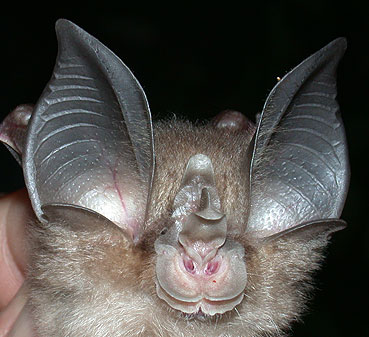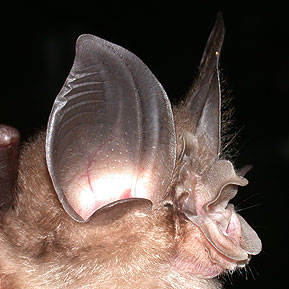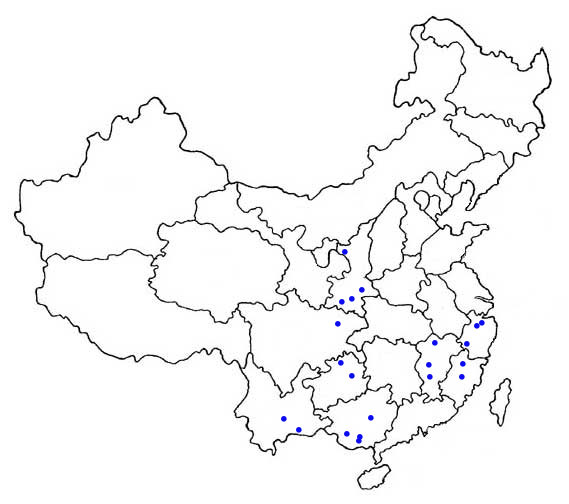Morphological description Life history Distribution Habitat Roost sites and roosting patterns Emergence and flight pattern Foraging behaviour Echolocation calls Status and protection


This taxon may include cryptic species (see Sun et al. 2008). Small bats in the macrotis group probably belong top the taxon R. siamensis however.
Morphological Description
· Dorsal fur is light brown. Ventral fur is buffy.
· Forearm length 46.9 - 49.9 mm (n = 5), mass 8.7 - 9.4 g (n = 4).
· The horseshoe is wide, covering the muzzle and is distinctly notched in the middle. A secondary noseleaf is present, but this is often concealed by the horseshoe. The sella is long, rounded and broad. The connecting process is high. The lancet is long with convex lateral margins and a rounded tip (Csorba et al., 2003).
Life history
· Little known
Distribution
Has an extensive range in southern Asia including Pakistan, north India, Nepal to southern China, Vietnam, Malaysia, Thailand, Sumatra and the Philippines (Csorba et al. 2003). The Chinese distribution is shown by the dots on the map below (as given by Zhang et al . 1997). Records probably refer to both R. macrotis and R. siamensis. We found definite R. macrotis in Beijing, Guangxi and Sichuan.

Habitat
· Little known. Csorba et al . (2003) note that this species is found at altitudes of 1661 and 1692 metres, and was recorded in lowland forest from 200 metres to 1050 metres.
Roost sites and roosting behaviour
· Generally roosts in caves and mines. Usually found in small numbers.
· This species often shares cave roosts with other bat species.
Emergence and flight pattern
· Most rhinolophid bats have wing shapes that make them adept at foraging in cluttered environments.
Foraging behaviour
· Blandford (1888-91) stated that it emerges from the day roost during early twilight, and flies rapidly and at high levels while catching beetles and small files, although the accuracy of these observations is unclear.
Echolocation calls
· The echolocation call is a long constant frequency signal, with a brief frequency-modulated start and tail. One bat in Beijing called at 53.9 kHz. Large bats (48-49.1 mm forearm length) in Guangxi called at 46.4-47.2 kHz. Elsewhere, frequencies of 51 kHz have been recorded in Lao PDR (Francis & Habersetzer 1998); 48 kHz in Malaysia (Heller & von Helversen 1989).
· Echolocation calls from a bat in Sichuan (frequency of most energy 52.2 kHz) in shown below.
· To listen to the call of the big-eared horseshoe bat click here
· Size of sound file: 176 kb
Status and protection
· There is no estimation of population size in China.
· Big-eared horseshoe bats are LR/lc, assessed by the Red List of Threatened Species (IUCN, 2006): the species is geographically widespread, although little studied. The species is not listed in the Law of the People's Republic of China on the Protection of Wildlife in 1989.
· Caves and forests should be protected as important habitats.